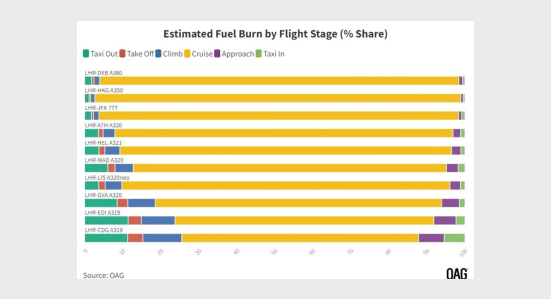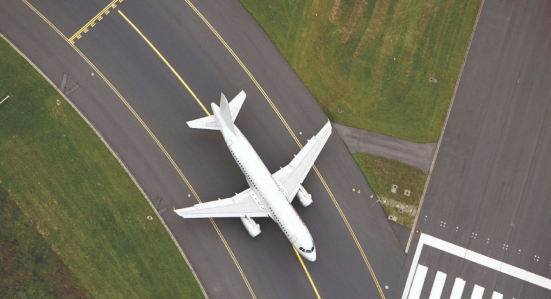
In 2011, a team led by L-3 Communications demonstrated electric taxiing at Frankfurt Airport with a Lufthansa Airbus A320. In 2013, Honeywell and Safran showcased electric taxiing on an A320 at the Paris Air Show. Within a few years, in the face of record low oil prices, both projects had been shelved.
Amid soaring fuel prices and rising sustainability pressures, the technology is heading back to the market. This time the charge is being led by Texas-based startup Green Taxi, which was founded late in 2021 having acquired the intellectual property (IP) for the system originally developed by L-3.
Both L-3’s GreenTaxi and Honeywell/Safran’s Electric Green Taxi System powered the aircraft’s main wheels with electric motors. Green Taxi is redesigning the system to power the nosegear, the approach already taken by WheelTug. And Green Taxi is targeting the Airbus A220 as its first application, although the system is being designed for the torques and loads associated with the larger A320.
By eliminating the need to use the engines for taxiing, Green Taxi estimates the system will save 262,500 lb. of fuel a year on an A220, based on five 15-min taxi cycles per day. Emissions savings will be 4,380 lb. of CO2 a year. Electric taxiing will also reduce brake wear, pushback costs and on-ground time.
Both L-3 and Honeywell/Safran demonstrated mainwheel-based electric taxiing because Airbus felt such a system would provide the traction required to taxi on a wet, uphill runway. But this should not be a driver, and the cost benefit of a lighter nosewheel system makes more sense, said David Valaer, Green Taxi founder and CEO.
“Our conforming prototype we will do on a nosegear system, but we can do mainwheel,” he said. Green Taxi argues it will be simpler and cheaper to use the engines to taxi in those infrequent conditions where a nosewheel taxiing system potentially might not provide sufficient traction. “Modifying the main gear is more complex, and harder to certify,” he added.
Armed with the L-3 IP and having assembled an experienced aerospace team, Green Taxi is working to obtain supplemental type certification (STC) of the nosewheel system on the A220 or A320 first depending on market demand. “Whichever airline steps up will be the first one to go,” said Valaer.
“We won’t do them concurrently. The A220 is the target. We have contacted A220 operators and had a very encouraging response,” he said. But the system will be sized for the A320, to provide a broader range of product opportunity. The Boeing 737, on which WheelTug has already demonstrated its nosewheel taxiing system, is also candidate for modification.
“Getting to the final STC is 1-2 years away,” Valaer said. The company plans to obtain an FAA STC first, followed immediately behind the European Union Aviation Safety Agency validation. Green Taxi has already partnered with suppliers including Leonardo DRS for the electric motors, Crane Aerospace & Defense for the inverter/controller and a gearbox manufacturer.
L-3 obtained a letter of No Technical Objection (NTO) from Airbus enabling it to modify an A320 for the Frankfurt demonstration in 2011. Green Taxi is now working with the manufacturer to get a similar NTO for the nosewheel system and its installation on the A220, as well as the A320, confirming the electrical power demands are within the aircraft’s auxiliary power unit, power conversion and control limits.
While its rival is offering lease to systems and share cost savings with customers, Green Taxi plan to sell its systems. “The pricing that we’re looking at, it will pay back in under three years,” Valaer said. Retrofitting an aircraft with the Green Taxi system is expected to be performed in under two days, said Valaer, during a C-check when an aircraft undergoing major overhaul is jacked up off the hangar floor so that landing-gear swings can be performed.

In 2011, a team led by L-3 Communications demonstrated electric taxiing at Frankfurt Airport with a Lufthansa Airbus A320. In…
Read More
Carbon Brakes Captain Shem Malmquist The following information was adapted from an article on brake use by Capt. Simon, UAL…
Read More
14 CFR Part 39 [Docket No. FAA-2022-0160; Project Identifier AD-2022-00009-E] RIN 2120-AA64 Airworthiness Directives; CFM International, S.A. Turbofan Engines (summary)…
Read More
In this analysis, we use the model to take a look at a selection of flights for a specific day…
Read More
On average, a single-aisle jet burns more than 65 gallons of fuel while taxiing, which translates to almost $130 per…
Read More